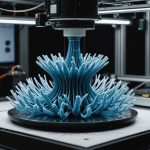Unpacking the Surge of Modular and Prefab Homes in Cityscapes: Essential Trends and Insights to Know
As we step into 2025, the landscape of urban living is undergoing a significant transformation, and at the heart of this change are modular and prefab homes. These innovative housing solutions are not only redefining the way we build and live but also addressing some of the most pressing issues of our time, such as sustainability, affordability, and efficiency. Here’s a deep dive into the trends, insights, and key features that are driving this surge.
The Evolution of Prefabricated Architecture
Prefabricated homes have come a long way from their humble beginnings as temporary or emergency housing. Today, they are a viable and attractive option for many, offering a blend of style, customization, and sustainability that rivals traditional construction methods.
In parallel : Transforming cityscapes: how innovative landscape design can boost urban biodiversity in new real estate projects
“The future of prefab homes lies in their ability to merge cutting-edge design with sustainable practices, creating beautiful and functional living spaces that redefine the boundaries of traditional construction,” notes an industry expert[1].
Modern prefab homes are designed with open layouts, large windows, and seamless indoor-outdoor transitions, making them feel spacious and modern. The use of eco-friendly materials like bamboo, recycled plastics, and low-VOC paints not only reduces the environmental impact but also creates healthier indoor air quality.
Have you seen this : Ultimate handbook for performing environmental impact assessments on uk real estate developments: a step-by-step breakdown
Key Features of Contemporary Prefab Design
Sustainable and Energy-Efficient
One of the most significant advantages of prefab homes is their focus on sustainability and energy efficiency. Here are some key features:
- Energy-Efficient Design: Prefab homes are built with advanced insulation, energy-saving windows, and smart systems that reduce energy consumption and lower utility bills.
- Eco-Friendly Materials: The use of materials like recycled steel, bamboo, and low-VOC paints reduces carbon emissions during construction and promotes healthier living spaces.
- Modular Construction: The off-site construction of prefab homes minimizes waste and optimizes resource utilization, making them a greener choice compared to traditional construction methods.
| Feature | Benefit |
|---|---|
| Energy-efficient design | Reduced energy consumption and utility bills |
| Eco-friendly materials | Lowered environmental impact and healthier indoor air quality |
| Modular construction | Decreased waste and optimized resource utilization |
Smart Technology Integration
Smart technology is at the forefront of modern prefab living. Here’s how it’s making a difference:
- Home Automation Systems: Prefab homes are equipped with advanced home automation systems, including voice-controlled lights, climate control, and security systems. These features make life easier, more efficient, and safer.
- Energy Management Solutions: Systems that track and improve energy use help homeowners monitor their energy consumption and find ways to reduce it. These systems often work in tandem with solar panels to minimize reliance on traditional energy sources[1].
Trends in Modular and Prefab Homes
Minimalist Designs and Biophilic Elements
The prefab home industry is embracing several key trends that are redefining luxury living:
- Minimalist Designs: Modern prefab homes feature minimalist designs that emphasize simplicity and functionality. This aesthetic is not only visually appealing but also promotes a more streamlined living experience.
- Biophilic Elements: The integration of biophilic elements, such as large windows, green roofs, and natural materials, helps connect residents with nature. This design approach is not only aesthetically pleasing but also beneficial for mental health and well-being[1].
Flexible Layouts and Multi-Functional Areas
Prefab homes are designed with flexibility in mind. Here’s how:
- Open-Concept Floor Plans: These plans merge living, dining, and kitchen spaces, creating adaptable and spacious living areas.
- Multi-Functional Areas: The use of multi-functional areas allows homeowners to customize their spaces according to their needs, making the homes highly versatile[1].
Economic and Market Insights
Cost-Effectiveness
Modular and prefab homes offer several economic advantages:
- Lower Construction Costs: The off-site construction process reduces labor costs and minimizes the risk of weather-related delays, making prefab homes more cost-effective.
- Faster Construction Time: Prefab homes can be constructed much faster than traditional homes, which means homeowners can move in sooner and start enjoying their new space.
- Energy Savings: The energy-efficient design of prefab homes leads to significant savings on utility bills over time[1].
Market Growth
The market for modular and prefab homes is experiencing rapid growth, driven by several factors:
- Increasing Demand for Sustainable Housing: As concern about climate change and environmental sustainability grows, more people are turning to prefab homes as a sustainable and eco-friendly option.
- Urbanization and Housing Shortages: In urban areas, prefab homes offer a quick and efficient solution to housing shortages, providing high-quality living spaces without the long construction times associated with traditional building methods.
- Technological Advancements: Advances in construction technology and materials are making prefab homes more appealing and accessible to a wider audience[1].
Environmental Impact and Sustainability
Carbon Footprint Reduction
Prefab homes have a significantly lower carbon footprint compared to traditional homes:
- Reduced Waste: The modular design of prefab homes minimizes waste during construction.
- Eco-Friendly Materials: The use of recycled and sustainable materials reduces the environmental impact of the construction process.
- Energy Efficiency: Prefab homes are designed to be energy-efficient, which reduces GHG emissions and reliance on fossil fuels[1].
Case Study: Béton Cellulaire
An innovative material that is gaining traction in the construction sector is béton cellulaire (cellular concrete). Here’s why it’s a game-changer:
- Lightweight and Insulating: Béton cellulaire is composed of natural materials like sand, lime, cement, and water, with an added foaming agent. This creates a lightweight and insulating material that is perfect for energy-efficient construction.
- Environmental Benefits: The production of béton cellulaire requires less energy and generates fewer CO₂ emissions compared to traditional concrete. It is also fully recyclable, making it an excellent choice for sustainable construction projects[4].
Practical Insights and Actionable Advice
Choosing the Right Prefab Home
If you’re considering a prefab home, here are some practical tips to keep in mind:
- Assess Your Needs: Determine the size and layout that best fits your lifestyle. Prefab homes come in various sizes and configurations, so it’s important to choose one that meets your needs.
- Check Local Regulations: Ensure that prefab homes are allowed in your area and comply with local building codes and regulations.
- Research Manufacturers: Look for manufacturers that use eco-friendly materials and have a strong focus on sustainability and energy efficiency[1].
Integrating Smart Technology
To get the most out of your prefab home, consider integrating smart technology:
- Home Automation Systems: Invest in a comprehensive home automation system that includes features like voice-controlled lights, climate control, and security systems.
- Energy Management Solutions: Use systems that track and improve energy use to optimize your energy consumption and reduce your carbon footprint[1].
The surge in modular and prefab homes is not just a trend; it’s a revolution in the construction industry. With their focus on sustainability, energy efficiency, and smart technology, these homes are redefining urban living and setting a new standard for the future of housing.
As we move forward, it’s clear that prefab homes will play a crucial role in addressing global challenges like climate change, housing shortages, and the need for sustainable living. Whether you’re a homeowner looking for a sustainable option or a developer seeking to make a positive impact, prefab homes offer a compelling solution that is both economically viable and environmentally friendly.
In the words of an industry expert, “The future of prefab homes is looking up. With new designs, construction methods, and tech, prefab homes are becoming more affordable and sustainable. This could change how we think about owning a house in the coming years”[1].
As we embrace this new era in housing, it’s essential to stay informed about the trends, insights, and innovations that are shaping the industry. By doing so, we can ensure that our built environment is not only beautiful and functional but also sustainable and resilient for generations to come.











